Placing Queensland On The Artistic Map
The 20th century was a remarkable period that saw great changes in the social and political structures of Australia. With the advent of the Depression, World War II, and the following Post-War years, the burgeoning Brisbane socio-cultural landscape became a primary inspiration for artist John Rigby. At Red Hill Gallery we are delighted to be showing a preview of a retrospective exhibition ‘100 Years of John Rigby’ we will present in February 2022. ‘Setting the Scene for 100 Years of John Rigby‘ will focus on the artist’s paintings with Queensland landscapes and scenes as their subject.
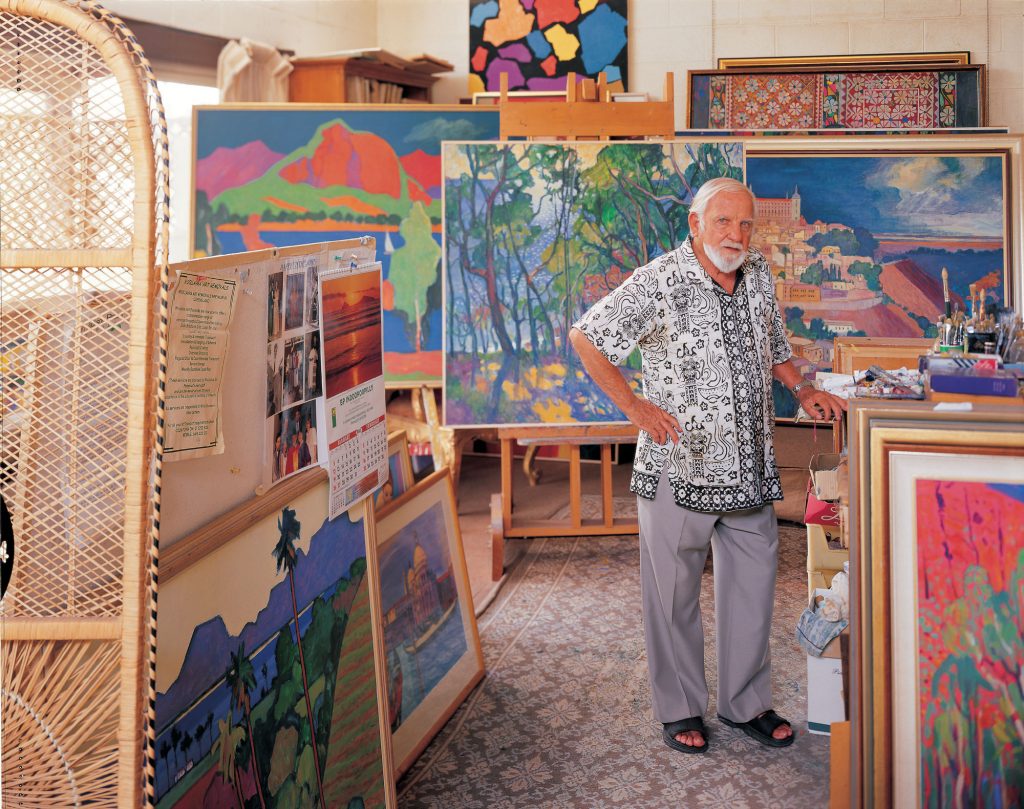
John Rigby in his studio, 2003
Born in 1922 in Brisbane, he enrolled at the Brisbane Central Technical College in 1937 and gained employment as a sign-writer followed by a job in advertising. in 1942, Rigby enlisted in the Army – like many young men of his time – serving in the 101 Australian Tank Attack Regiment in Australia and in the 1st Australian Army Intelligence in Papua New Guinea. Upon being discharged from the Army, Rigby returned to advertising and began drawing cartoons for the Sunday Mail newspaper. Encouraged by ex-service personnel training schemes, Rigby enrolled at the East Sydney Technical College. In 1955, Rigby received the Italian Government Travelling Art Scholarship which allowed the artist and his family to live and paint for a year in Italy. On his return back to Australia, Rigby was loaded with inspiration, knowledge and skills to established his place as a great Australian artist. Among his many awards and accolades he was a Trustee of the Queensland Art Gallery, Officer-In-Charge of Fine Art at the Queensland College of Art, Honorary Doctorate at Griffith University, Honorary Member of the Royal Queensland Art Society and Companion of the Queensland Academy of Arts and Science.
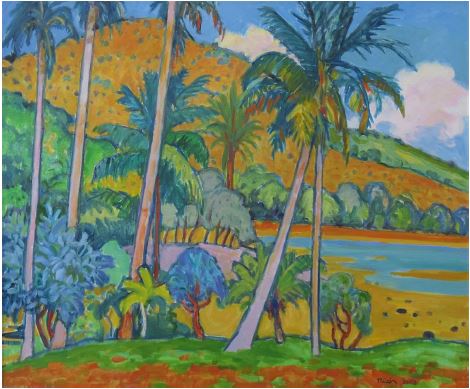
St Bees Bay, North Queensland (2003) 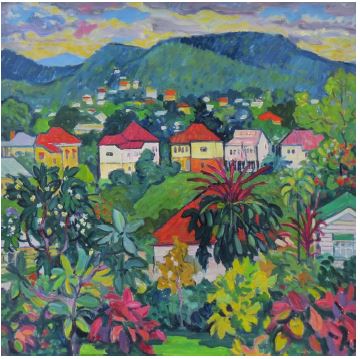
Western Suburbs, Brisbane (1990)
Rigby draws inspirations from nature whether innate or human and describes his interpretation of this as a “poetic reality”. His work makes visual references to the Fauvist movement characterised by a high chroma palette and fierce brushstrokes that was prominent in the early 20th century. In the subject of landscapes, particularly those in Australia, Rigby professes that the strong colours are no exaggeration. Colour continued to be a defining feature in his work and has become his oeuvre.
“I don’t want my work to become softer, I want my work to get stronger and richer. I want it to be different…a retrospective of art expressed through shimmering pools of colour that burst into flames of red and orange, completely devoid of any meaning other than to offer pleasure and joy to those who view them“.
John Rigby in an interview in the Courier Mail, 1990
Rigby’s paintings have charted the life and experience of the artist through a period that inspired great social and cultural changes in Queensland. He not only painted iconic Queensland landscapes but was renowned for his portraits of friends, family and prominent figures in society which further cemented his notoriety. Rigby’s work helped to dispel the myth of Queensland as a cultural backwater to the rest of Australia and established it as a place where artists can flourish. Fellow artist Sali Herman in a letter to Rigby wrote, “Brisbane can be glad to have you…it is good to know that there are now Artists of Merit and greater Promise almost all over Australia. What a change to what it was like when I came to Australia 21 years ago”.
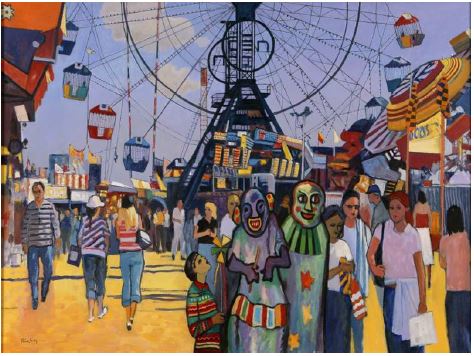
We are delighted to be working with John’s children; Renee, Mark and Tony to present this retrospective in their father’s honour. ‘Setting the Scene for 100 Years of Rigby’ will open on Friday 6th August 6pm -8pm at the Gallery.
To keep up-to-date with our gallery follow us on Facebook and Instagram and our website. Red Hill Gallery is located at 61 Musgrave Road, Red Hill, Brisbane QLD, and is one of the few Galleries in Brisbane open seven days 10am – 4pm.
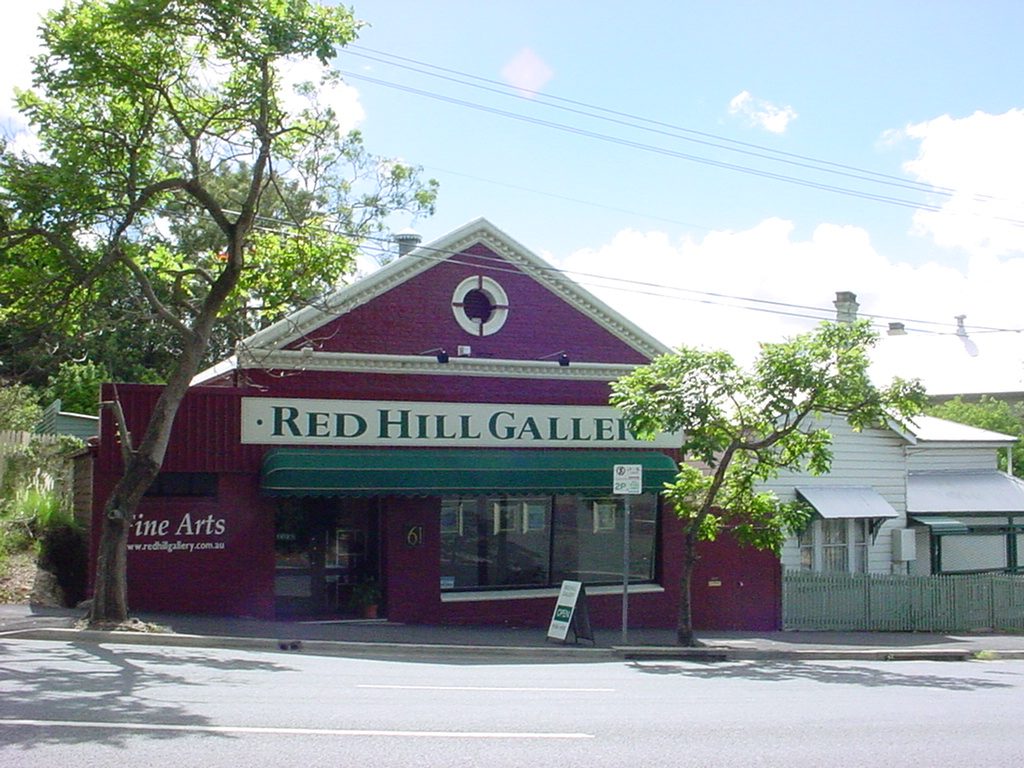



![Flight (Arr. for Saxophone and Organ by Anna Lapwood and Jess Gillam) [feat. Jess Gillam]](https://is1-ssl.mzstatic.com/image/thumb/Music221/v4/4e/ef/3e/4eef3e39-190b-31c8-fd5e-a1760699cb78/196872920406.jpg/60x60bb.png)

